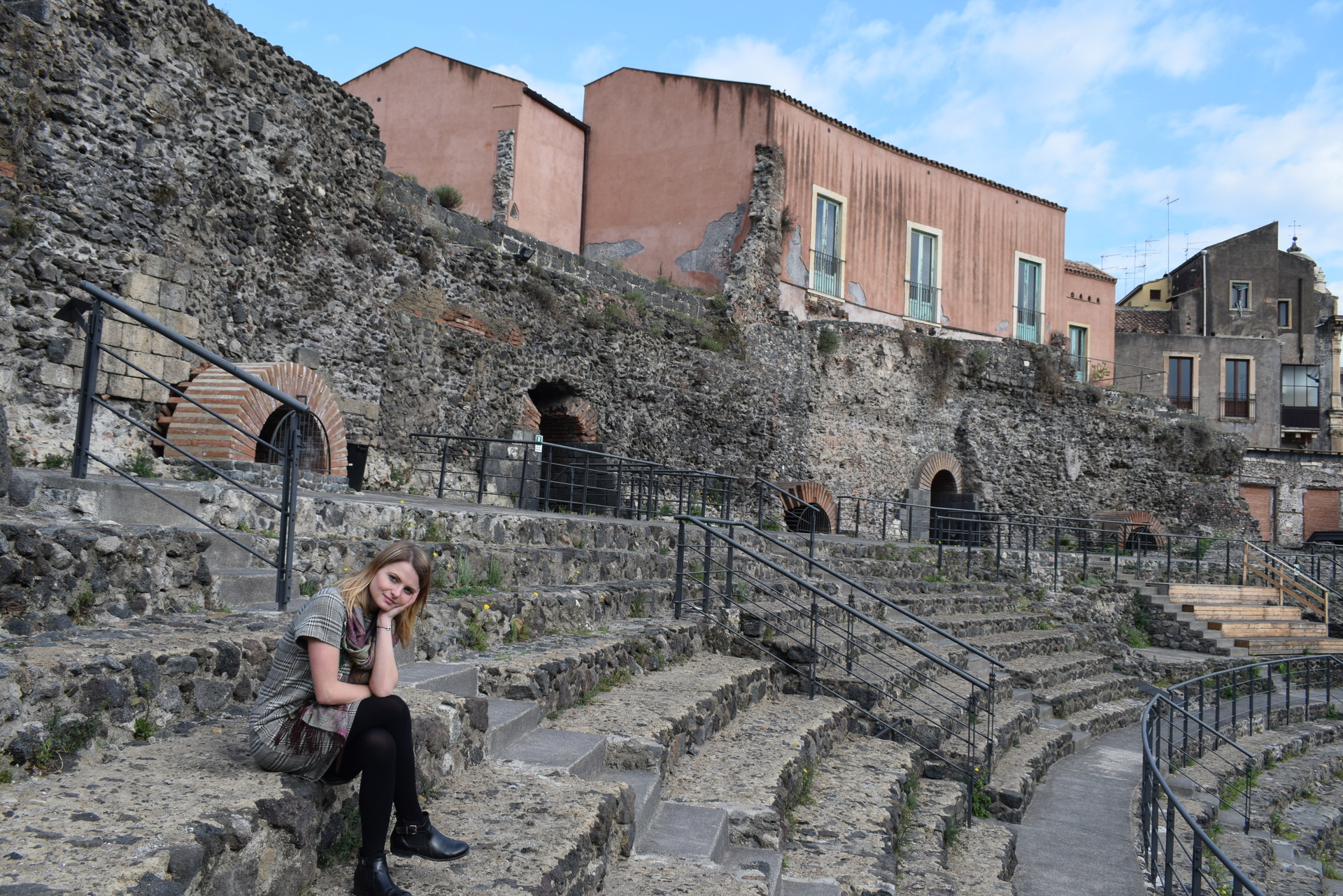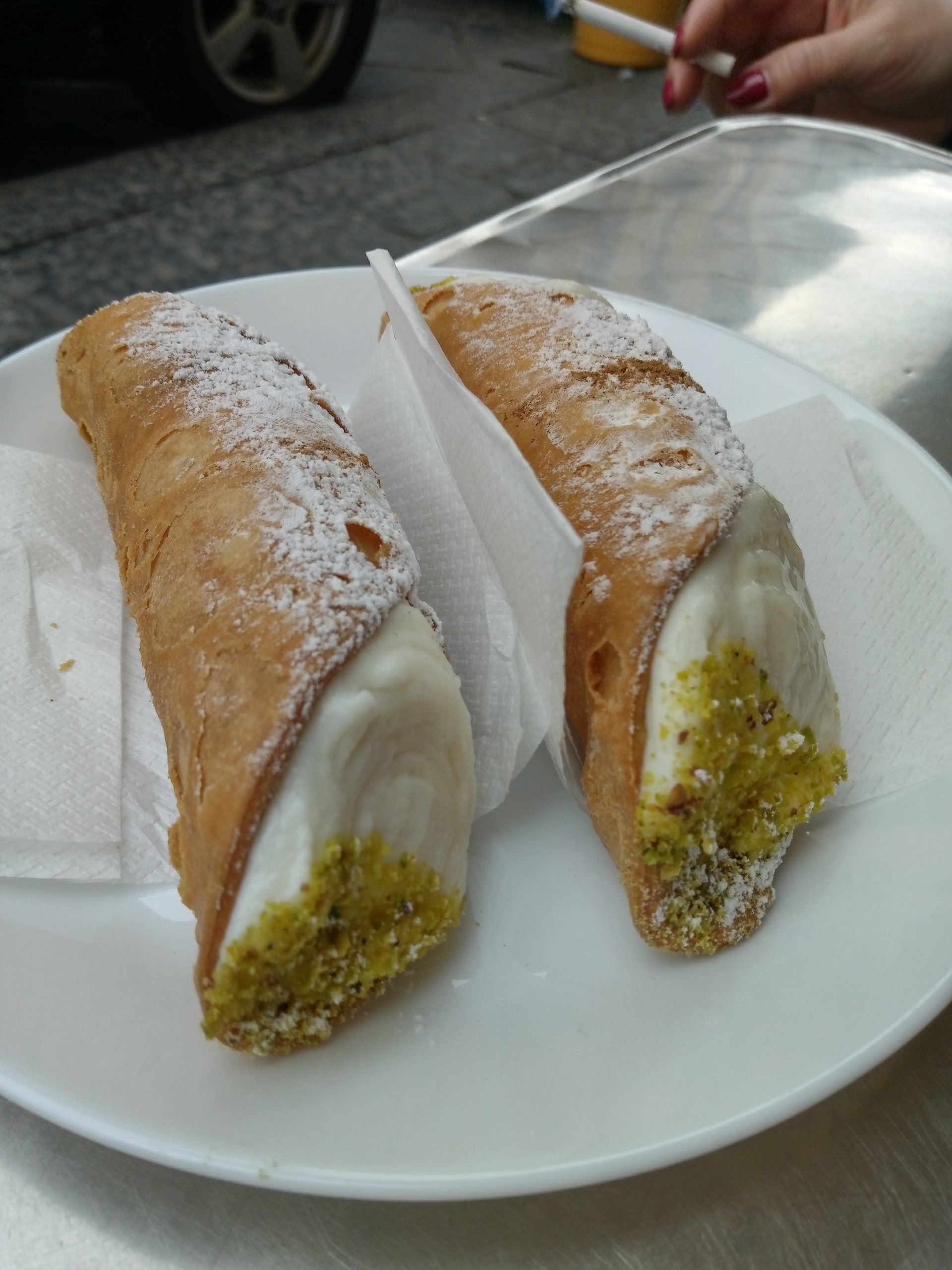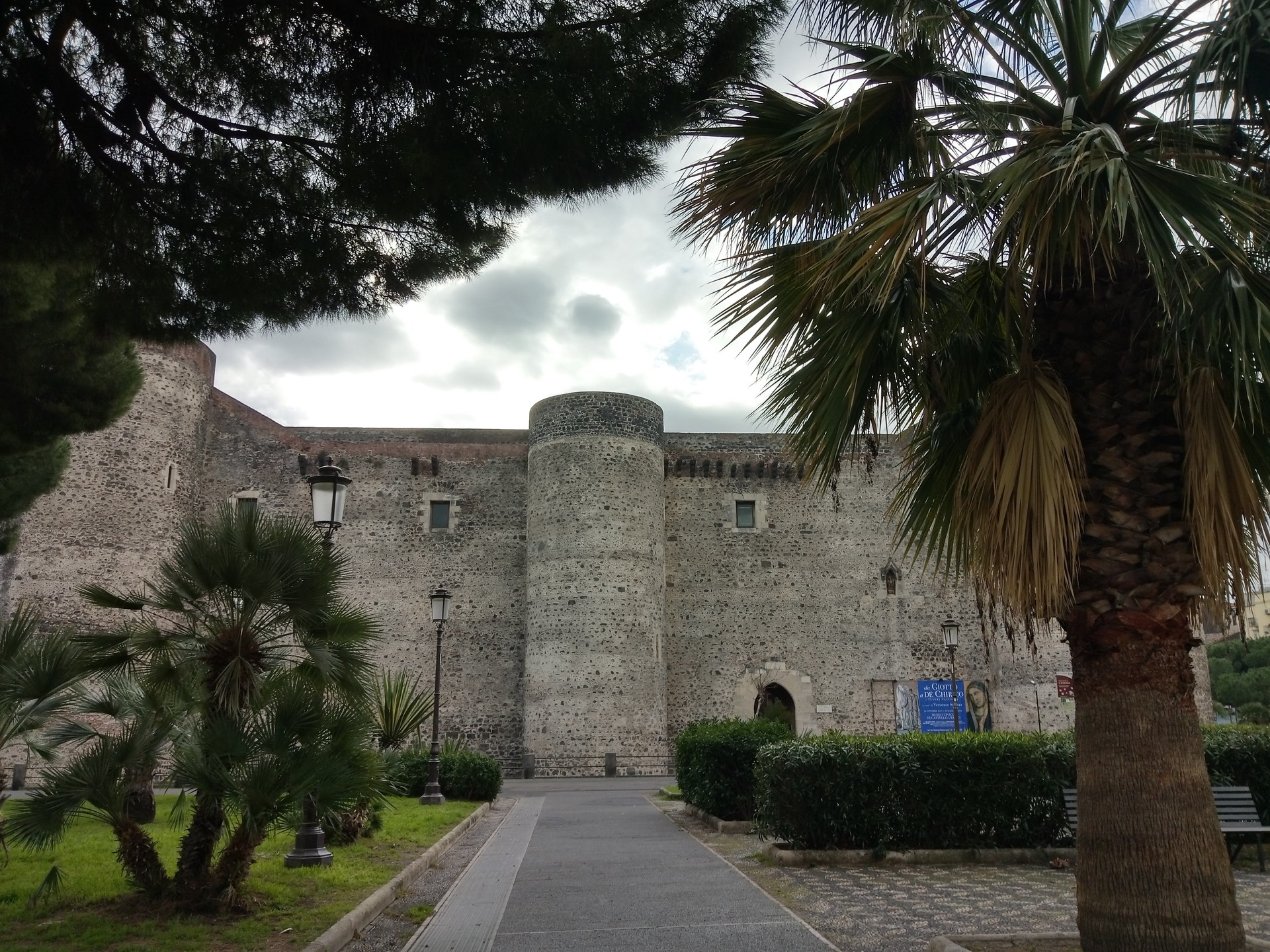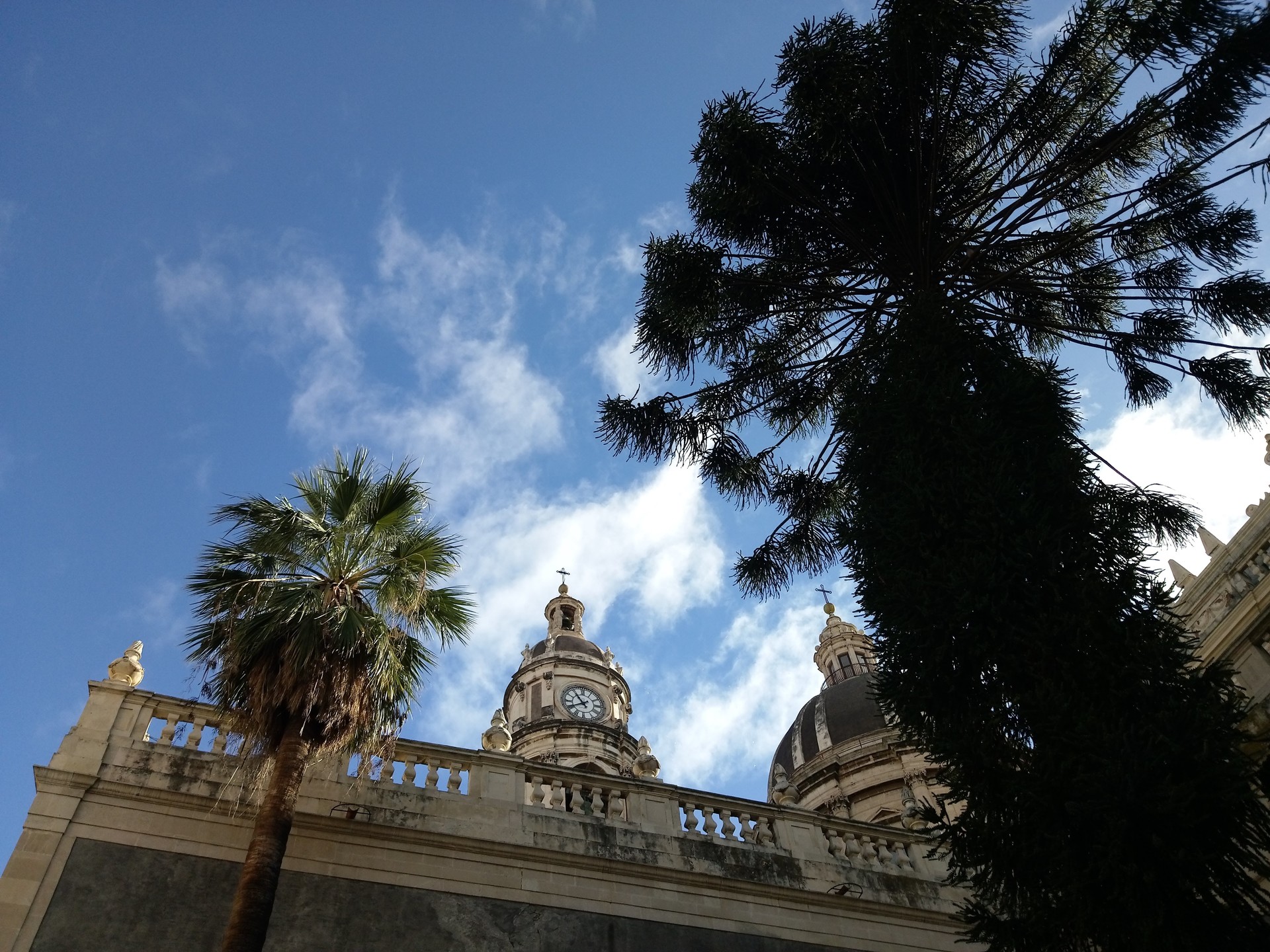A day in Catania
The city of Catania is located in the east middle coastal part of Sicily and was founded in the eighth century before the birth of Christ by the Greek people. The name of the city in the ancient world was Katana, which meant “the bay” or “the coast”. The city was quickly settled and established by the Greeks, and along with its extremely fertile land it was quickly developed into an agricultural center for the Greek colonists. Luckily, they were growing their colonies unbothered for a couple of centuries until the tyrant of Syracuse, Dionysius, attacked the city and sold its citizens as slaves. Later, he settled into a nearby little city and made sure that its population is not Greek. However, after his death and the end of his tyranny, the people of Catania returned to their homeland and revived the city again.
Although, a couple of centuries after that the Romans took control over the city, during the Punic wars and made it part of the Roman Empire. Not long after the rule of the Romans, Mount Etna, or as the locals call it, mother Etna, the city was once again left. Eventually, people returned to the city, so they can continue its development and growth, which was the result of its greatly fertile land, due to the often volcanic eruptions.
Like many of the cities on the island of Sicily, Catania was also attacked by the Nordic tribes that were ruling these lands around the tenth century. It was also often attacked by the Carthaginians and was even ruled by the Arabs for a couple of years. Centuries later, it was ruled by the Bourbons, which were part of the Spanish royal family in the Middle ages. Finally, the city was freed and became part of Italy around the nineteenth century.

Nowadays, Catania is a huge city spread across the southeast part of the Etna volcano and exactly on the Mediterranean Sea. The local people there are extremely friendly and smiley, which makes you feel welcome and positive all the time. I had the chance to spend some time there and have a very nice conversation with my host that told me a lot about the history of the city and one of the best places I can visit for a day. She also was nice enough to suggest some nice restaurants and cafes that provided excellent service and food.
Where and what to eat in Catania?
Catania offers a wide variety of meal options that you can try from. Actually, the first time I tried a Neapolitan type of pizza was in Catania. It was in a very nice bakery that was opening at lunch and was closing late at night and it was close to the place I was staying in, so it was always an option. The Pizzeria Sicilia Bedda-Bella Napoli even accepted orders for which you could wait for like twenty minutes and the pizza was usually ready. I still remember the freshly baked smell of it. Yummy!
Another very good restaurant with great food options is the Bar Chiosco In68 next to the Ursino Castle, which offers the best pasta with fresh seafood around. Moreover, the customer service is excellent and the quality of the meals is outstanding, thus I would definitely recommend you to try it.
Also, go for a cannoli and you won’t be sorry! Cannoli is the only Italian pastry in the world filled with sweet ricotta that I would recommend ever! It is absolutely amazing in taste, as it is not too sweet and not too salty. The cannoli is the perfect mixture of salty and sweet for me. While I was in Catania I tried a couple of bakeries that were making cannoli, but I think that Dolci di Nonna Vincenza was the best one. Usually, the price of a cannoli is around two to three euros for a piece that is quite big and fulfilling, so it is absolutely worth it.

Last but not least, try the fresh fruits in Catania and I promise you won’t be sorry. When I was there in January there were lots of citrus fruits among which were red oranges, that were incredible in taste and the Sicilian citron, which is a lemon-like fruit, which is very sweet in taste and tastes more like very sweet lemon, which is very nice.
Things to visit while in Catania
There are many things that a person can visit in Catania, but a day is simply not enough to see it all. However, I will share with you the things I saw and some tips while you are on your trip.
Castello Ursino
While walking around the narrow colourful and full with lively streets of Catania I ended in front of the Castello Ursino, without planning it. The castle, that looked more like a huge fortress, was built around the thirteenth century for the King of Sicily, who was also the ruler of the German Kingdom.

Unfortunately, I was not able to go inside the castle, as it was closed that day. However, I decided to walk around the Ursino Castle, which was quite a huge castle that had big defense walls and pits around its bridge. There was also a very nice garden of little palms surrounding the castle along with some benches to sit around and admire the castle.
Cathedral of Saint Agatha
The cathedral of Catania was built around the tenth century, but due to many earthquakes, it was destroyed a couple of times in the past. However, since the last destructive earthquake, the cathedral was rebuilt again in its today Baroque architectural style. The cathedral of Catania is dedicated to Saint Agatha, who is the patron Saint of Catania. She became a saint after she was tortured by a man that wanted her to be his wife, but she decided to keep on her vow of virginity and stay true to her faith to God.

The cathedral of Saint Agatha is quite huge and its interior is made out of lots of arches and a couple of altars among which is the altar of Saint Agatha. The cathedral is built in entirely Baroque style and has a huge dome along with a bell tower on one of its tops. In addition to that, the cathedral has a very nice garden on its right side and a couple of ways to enter into the cathedral on that side.
The Elephant fountain
Next to the cathedral of Saint Agatha is the famous Elephant fountain of Catania. It was built and designed around the eighteenth century by Vaccarini and since then became the symbol of Catania. When I approached the fountain I saw that there was a huge elephant that was holding an obelisk, which had a cross on its top. Later, when I spoke with my lovely host about it, she explained to me that all parts of the fountain had a symbolic meaning. For example, the elephant was representing the Punic or Carthaginian civilization, as most people know it, the obelisk represented the Egyptian civilization and the cross represented the Cristian civilization. It was quite fascinating to look at the black elephant that was made out of lava and as per most people was dating back to ancient times. To me, the fountain was memorializing all the important civilizations of the ancient world and was emphasizing their importance of being the ones to lead the steady development of the future of the people.
Roman Theatre of Catania
The Roman theatre of Catania is close to the Piazza Duomo in Catania and can be easily found on Via Vittorio Emanuele II. The price to enter is six euros and there is a reduced ticket for a student for three euros.

At the beginning of the Roman theatre, there are many destroyed rooms and corridors that are leading you to the inside of the theatre. It is quite fascinating that even though this theatre was built in the centuries before the birth of Christ it managed to preserve most of its part, so we can admire its greatness today. At first, the theatre was built by the Greek colonists and then centuries later the Romans build over it so that they can make it bigger. Back in the ancient times, the theatre was mostly used to represent sea battles with ships in its basin or recitals by famous philosophers or poets. Unfortunately, with time the theatre was abandoned and it was even used as a quarry for the building of the cathedral of Catania.
However, while walking in its corridors I also found the back of the theatre that had many gates from which the performers were going on the stage. Following the map, I was given at the entrance I also found the so-called “Odeon”, which was used as a little stage for singers and dancers that were performing on it. It was quite well-preserved and I learned from my host that there are even performances that are held these days in it, thus it is quite fascinating.
Furthermore, there were lots of artefacts and statues in the little museum of the theatre, which was part of the podium or the arches of the theatre.
Amphitheatre of Catania
Then, I continued up the streets until I reached the other famous landmark in Catania, which was its amphitheater. It was enclosed with fences so that people can not go inside, as it was on a ground level, but you can see pretty much everything from above and its arched walls surrounding the fields. The amphitheater of Catania was built around the second century and was used mainly for gladiator fights, which were entertaining the people at that time. During the ages, the amphitheater went through a lot of restorations due to the numerous earthquakes in Etna city and the occasional lava flows from the volcano. However, it remained until this very day and is entertaining its visitors even today.
The Bellini garden
Then I continued up to Via Etnea, which was the main shopping street in Catania and arrived at the main entrance of the Bellini gardens. The gardens are absolutely astonishing and have many plant species. In addition to that, there are numerous statues and fountains that you can admire all day on the benches that surround them. Honestly, this is one of the best gardens I have ever visited.

This is how I spent my day in Catania, which was filled with lots of historical landmarks and the beautiful gardens that surround them. Catania is a very lovely city full of positive energy and smiley people all around that only add to your good mood.
Photo gallery
Content available in other languages
- Español: Un día en Catania
Want to have your own Erasmus blog?
If you are experiencing living abroad, you're an avid traveller or want to promote the city where you live... create your own blog and share your adventures!
I want to create my Erasmus blog! →





















Comments (0 comments)